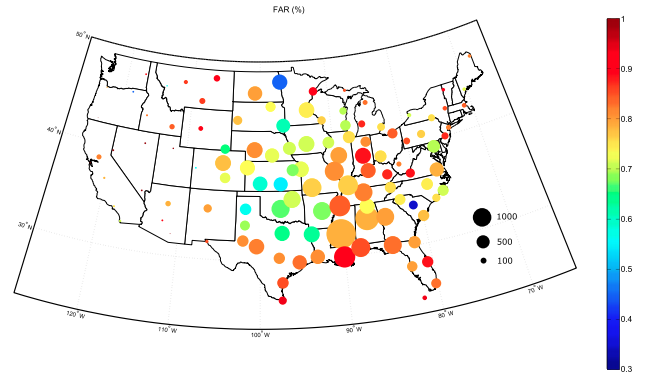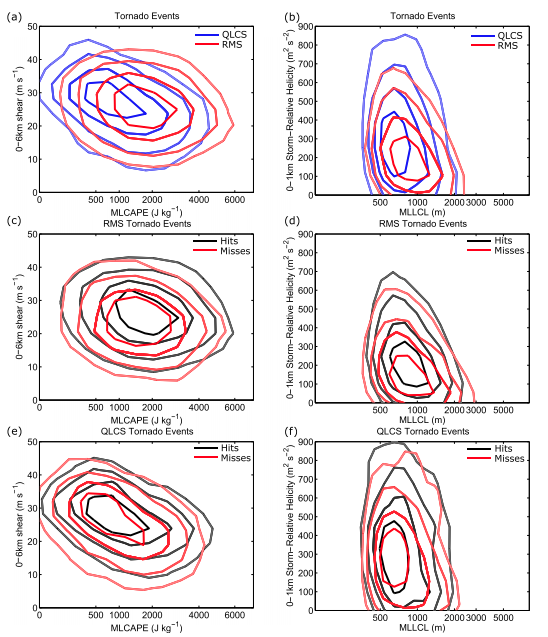Good evening everyone! I’m getting my review in last minute for a late night read and if you’re nutty like me, this is exactly what you need to relax right before you go to sleep, (And no, I don’t mean that this will put you to sleep). Here’s my take on the Investigation of Near-Storm Environments for Tornado Events and Warnings that was published by Alexandra Anderson-Frey, Yvette Richardson, Andrew Dean, Richard Thompson, and Bryan Smith.
Summary:
The authors are challenging the previous techniques of predicting tornadoes and introducing that alternative means of forecasting include the higher values when looking at tornadogenesis and using a holistic view of the storm as opposed to a set standard of numbers. The main concern with the way that the preexisting EF-scale classifies tornadoes is that it purely looks at damage impact and attempts to give it a single number.

The concern is obvious; that some situations simply can’t be lumped with others because while one may cause little damage, there are issues with location variance as well as population that are errors within calculations. Of course, the authors establish their credibility and explain their data-set as well as study methods.
In order to avoid flaw found by previous studies, they introduce the “kernel density estimation”, which, “assigns each data point a shape. . . which is smoother than the rectangles used in the two-dimensional histogram approach. . .each kernel essentially acts as a probability density function centered on the location of its corresponding data pint in the parameter space” (1774).
By including this, they further hope to eliminate other flaws from past research and modernize the accuracy of tornado forecasting. For contextual study, included is the unique and exception cases that prove not all tornadoes to fall within the same parameters. Along with this, the authors choose to include a comparison of warning skill and quantity in relation to what occurred thereafter.

Finally, in their conclusion, they discover their results showed that, “to issue timely and accurate tornado warnings, forecasters must make use of data such as numerical modeling output and observations, and must also draw on their own experience and understanding of the situation” (1784).
3 Things For Further Research:
- I would like to see more research done into how location and populations affect these studies. They discuss a significant disproportion within the southern region as opposed to the mid-west and I wonder how this is factored into a scale within values of data.
- The occurrence of tornadoes at night in the winter seasons. I have now read 2 articles in which they mention how very few night/winter tornadoes are actually caught because they don’t perfectly align with the models and the perfect scenario outline.
- The human influence in tornado warning issues; they mention how the “emergency managers” are at some connection to whether or not a warning goes out. Due to the human impact, could there be a severe case of tornadoes not being given adequate attention because we as forecasters are taught to examine only the normal and what looks to be within our set standards for tornadogenesis.
Modern Meteorology:
The future of tornado warning and the process in which we gather data to issue warnings will ideally take different routes in valuing certain data. While there is data that is scientific (Skew-T) and other that is subjective (damage) the authors challenge future meteorologists to create an alternative system that efficiently compares 2-D with 3-D data to avoid faulty calculations or dis-proportioned warnings.
Thanks for reading! Good night!

